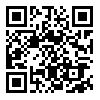Volume 22, Issue 2 (10-2016)
Research on Information Science and Public Libraries 2016, 22(2): 213-227 |
Back to browse issues page
Tehranuneversity , znaseri50@gmail.com
Abstract: (5094 Views)
Purpose: In digital age, web applications work as machines that swallow time rapidly. A new generation tendency to use these tools for entertaining and information gathering has changed their habits in type of selected materials and reading practices. In other words, although users currently receive information from internet, they have increasingly become superficial readers who have a little interest to read deeply in digital format. This unwillingness not only changes reading habits of young adults but also transforms their web browsing and information processing. The present study aims at the investigation of the effect of digital environment on users’ reading habits.
Methodology: We used a case study approach and Survey method was used. Also, questionnaire was used as a data collection tool. The population included all undergraduate students in all disciplines (=1000) who study in “Toos Institute of Higher Education”. 100 students were selected as a sample study based on accessibility principle.
Findings: The results indicated that participants commonly believed that internet increases interactive reading (=56 percent), expanded reading (=44 percent), and superficial reading (=49 percent). In contrast, it reduces concentrated reading (=34 percent) and in-depth reading (=28 percent). In addition, internet increases reading in the formats such as news (=63 percent), general knowledge (=85 percent), special literature (=63 percent), and pornography (=42 percent). In contrast, it has no any significant impact on religious literature (=35 percent) and literary literature (=40 percent).
Originality/Value: Value of this research lies in its effort to show altered reading habits, methods and formats in digital environment. It can be a useful source for accommodation with new interests and find new methods for deepen reading in these new behaviors.
Methodology: We used a case study approach and Survey method was used. Also, questionnaire was used as a data collection tool. The population included all undergraduate students in all disciplines (=1000) who study in “Toos Institute of Higher Education”. 100 students were selected as a sample study based on accessibility principle.
Findings: The results indicated that participants commonly believed that internet increases interactive reading (=56 percent), expanded reading (=44 percent), and superficial reading (=49 percent). In contrast, it reduces concentrated reading (=34 percent) and in-depth reading (=28 percent). In addition, internet increases reading in the formats such as news (=63 percent), general knowledge (=85 percent), special literature (=63 percent), and pornography (=42 percent). In contrast, it has no any significant impact on religious literature (=35 percent) and literary literature (=40 percent).
Originality/Value: Value of this research lies in its effort to show altered reading habits, methods and formats in digital environment. It can be a useful source for accommodation with new interests and find new methods for deepen reading in these new behaviors.
Type of Study: quantitative |
Received: 2015/09/10 | Accepted: 2016/09/27 | Published: 2016/09/27
Received: 2015/09/10 | Accepted: 2016/09/27 | Published: 2016/09/27
| Rights and permissions | |
 |
This work is licensed under a Creative Commons Attribution-NonCommercial 4.0 International License. |


